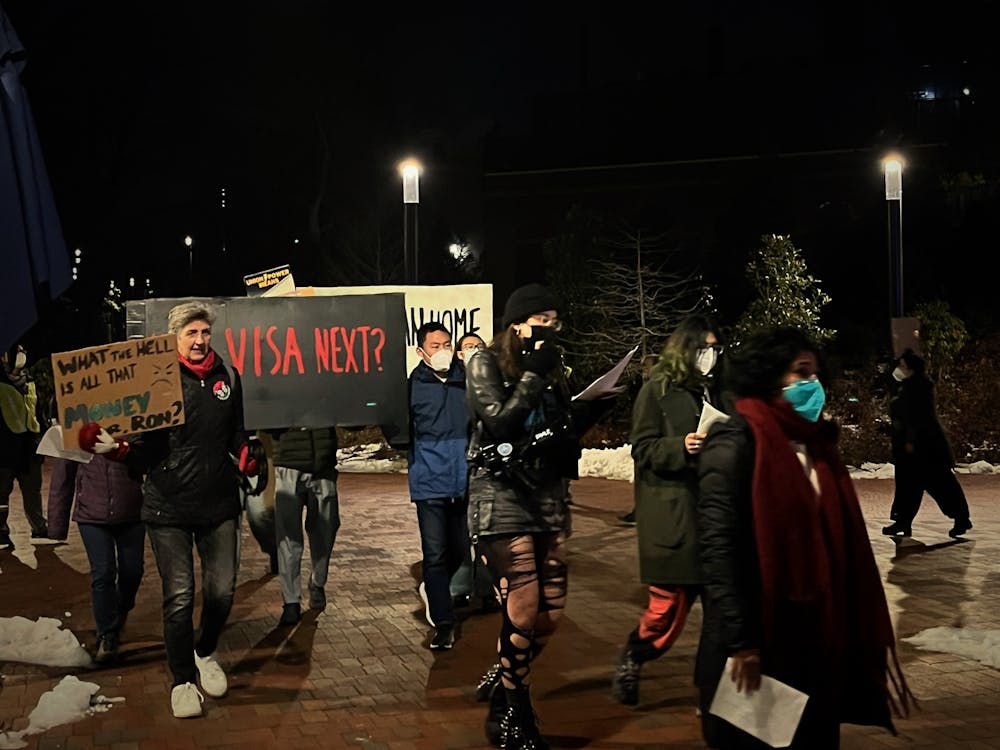Without a centralized method of searching for research opportunities, many Hopkins students rely on word-of-mouth and faculty directories to find research positions at the University.
ForagerOne, an online platform, is designed to streamline and standardize how students look for University-affiliated research opportunities. The platform officially released its beta version to the public in January.
Juniors Ansh Bhammar and Yash Jain created ForagerOne to maximize convenience and productivity when looking for research positions. During their freshman year, Jain and Bhammar were looking for available research positions when they realized how much of a struggle it was.
“We really thought this process needed to change to be more efficient for everyone,” Bhammar said.
Jain added that they wanted to create a more streamlined process for current and future students.
“Many of us came here for research, and the fact that it was so challenging to get involved is a problem that needed to be fixed,” Jain said.
Working with the Hopkins Office for Undergraduate Research (HOUR), and HOUR Manager Tracy Smith, the team has worked for the last two years to launch the website.
“ForagerOne acts as a comprehensive central hub to link students with faculty members and their websites,” Smith said.
ForagerOne aims to simplify the process of getting in touch with faculty members. After creating a profile on the website, students are prompted to search through the database which contains faculty info and filter through those who they are interested in contacting.
When students are ready to contact a faculty member, ForagerOne provides an application builder where students can fill out their resume info and write a brief statement to the faculty member they want to work with. This application and statement gets sent directly to the faculty’s ForagerOne account and email. If the faculty member does not have a ForagerOne account, then the application is sent to their University email.
If students feel they are not ready to contact a specific faculty member, they can bookmark their profile.
Despite the fact that ForagerOne currently contains over 4,000 faculty members across the University’s divisions, some professors are unaware of the platform and that they are listed on the website. The team hopes to continue reaching out to new faculty members and linking them with their ForagerOne profile. They also plan on conducting interviews with faculty members to ask them for input on additional features they would like to see incorporated.
Smith explained that once the faculty side of the program is further developed, more faculty members will be aware of ForagerOne. Smith also listed a few ideas that could potentially benefit the platform, like pop-up tutorials to help students navigate the site.
“ForagerOne isn’t going to answer every question. There’s still a lot of legwork that as a student you have to do,” she said.
Making the site more accessible to faculty members will make it easier for them to view student applications and interact with students through the site. Jain asserted this would also make the ForagerOne platform more centralized by keeping communications within the ForagerOne site.
“We’re looking to get rid of email completely from the process,” Jain said. “It makes things more efficient.”
Some professors, like Chuck Bennett, a professor in the Physics and Astronomy department, have not had trouble finding students to help with research projects. Bennett is currently working on developing the Cosmology Large Angular Scale Surveyor (CLASS), a microwave telescope.
“The physics students and I don’t feel a need [for the platform], but I can imagine that it would be useful on a wider scale at the university,” he wrote in an email to The News-Letter.
Students like freshman Hannah Garcia believe that having a central platform for research opportunities could be useful.
“While it was easy for me to find [a research position], I still had to look across a lot of platforms,” she said.
For students who have already made ForagerOne accounts, like freshman Nicholas Malloy, the simplified process has saved him time and energy.
“ForagerOne makes finding research positions much more streamlined and accessible than it currently is,” he said. “It’s helpful to students who don’t have the time to go through the [current] laborious process of searching for a lab position.”
According to Bhammar, the platform currently has at least 210 users. The team’s initial goal was to have 100 students in its first month.
Kamran Siddiq, ForagerOne’s lead of marketing, said that the feedback the team has received has been largely positive.
“Ninety-one percent of our users actually recommend ForagerOne over the traditional research search process and 100 percent would recommend it their friends,” he said.
Siddiq expects that ForagerOne will eventually expand to other institutions.
“If I look 10 years into the future, I can see ForagerOne at every university in America,” he said.




